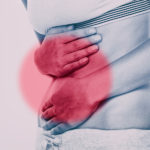By David Blyweiss, M.D., Advanced Natural Wellness
February 07, 2014
- Consumer Reports finds 97% of raw chicken tainted with bacteria
- Why “superbugs” are taking over our meat supply
- How to protect yourself and your family
Last night I went out to dinner at my favorite Mediterranean restaurant. A new item on the menu immediately caught my eye. It was a baked chicken breast topped with garlic and fresh tomatoes, with a side of steamed vegetables.
It sounded delicious. And I wanted to give it a try. But then I remembered a disturbing report I had just read in the December issue of Consumer Reports.
The folks at Consumer Reports purchased over 300 raw chicken breasts from stores all across the U.S. Then they tested them for bacteria that could cause food poisoning, urinary tract infections, blood infections and pneumonia.
Almost all of the chicken (97%) was tainted with bacteria that could be harmful to your health. And just about half of the samples contained bacteria resistant to drugs normally used to treat them.
Sadly, this was even the case when it came to organic chicken breasts and ones that were free of antibiotics.
MD Exposes the Hidden Danger to Your Eyes

When your eyesight starts to fail, it's a real problem. Suddenly you can't go to the grocery store... you can't get to the doctor if you have an emergency... you can't meet your friends for dinner…
Your "regular" doctor doesn't have time to keep up with the latest research. And the same goes for eye doctors. They go to school to learn how to fit you for glasses and contacts, but have no way of preventing the damage and loss of eyesight that threatens your freedom and independence.
Let me show you something that explains a LOT about how your eyes work.
In my FREE Special Report, I'll show you a HUGE, untapped resource for your eyes that safely and naturally restores clear, effortless eyesight.
Click here to get started...
Does this mean you should stop buying raw chicken?
That’s for you to decide. But first, let me address what I believe is an underlying cause of this very real problem.
It all goes back to the overuse – and abuse – of antibiotic drugs.
Now, I’ll be the first in line to say antibiotics are one of the greatest medical discoveries of our time. Before they were discovered, a single cut or scrape could have been a death sentence. If someone did manage to survive the Grim Reaper after a bacterial infection, chances were good they came out of it missing a hand, foot or an entire limb.
But over the years, many strains of bacteria have become resistant to antibiotics. The end result is an army of “superbugs” we have no treatment for.
The big question in your mind might be to wonder how this happened in the first place.
Well, there’s a two-part answer to that.
The World's Quickest Solution for Ending Prostate and Urinary Misery
This has recently been revealed to be one of the only real breakthroughs in prostate health.
The seeds of a strange fruit (sometimes called "Chinese Apples") hold powerful phytonutrients that are a revolution in prostate health.
In fact, UCLA and Veterans Administration research have now proved this to be true.
Not only that, but it may be the worlds quickest solution for ending prostate misery.
Simply stated, these phytonutrients represent a huge step beyond beta sitosterol, saw palmetto, and other phytosterols alone.
Simply click HERE if you want to have fast prostate relief...restful, uninterrupted sleep...no more constant "urges to go"...enhanced virility...and optimal prostate support for life.
The first part is overuse of antibiotics in humans. Whenever we have a cold, flu, sore throat or bronchitis, we want an instant solution. And many mainstream doctors are quick to write a prescription for antibiotics, even though they do nothing to stop or cure these viral ailments.
The second part is even more disconcerting.
It may sound unbelievable, but of all the antibiotics sold for use by people and livestock in the U.S., about 80% are for healthy farm animals. That equates to nearly 29 million pounds of antibiotics each year.
This blatant overuse of antibiotics on animals is believed to be a major contributor to the problem we’re facing today.
These animals are given the drugs to fatten them up and keep them healthy in unsanitary conditions. Bacteria become resistant and travel with them to the processing plant and grocery stores.
Next thing you know, it’s on your dinner table, and you become sick with a hard-to-treat bacterial infection.
Fortunately, there are some things you can do to avoid these negative consequences.
First of all, I recommend getting only 13% of your diet from meat products, including poultry.
If you do choose to purchase chicken, look for organic, pasture-raised chicken. These birds are raised outdoors where they eat grass, weeds, bugs and worms. They’re antibiotic-free. And their diets are supplemented with grains that aren’t genetically modified.
This is an important distinction, because genetically altered grains are loaded with toxic pesticides that end up in the chicken that winds up on your dinner table.
I also recommend purchasing the whole chicken, rather than chicken parts. That’s because the spread of bacteria often occurs in the plants that process the chickens. And they use the same equipment – whether the bird is organic or not. So the less processing required, the less risk of your chicken being contaminated.
And, please… avoid pre-cooked, store-bought chicken whenever possible. This type of chicken may have been responsible for the big outbreak of Salmonella Heidelberg last year. That resulted in more than twice the number of hospitalizations than a normal outbreak.
It’s also important to practice safe food-handling procedures:
- Keep your chicken sealed in a plastic bag or other container, so the raw juices don’t come into contact with other foods.
- Wash your hands with warm soap and water after handling any meat. And don’t forget to disinfect kitchen counters, dishes and utensils used in the preparation process.
- Don’t wash your chicken before cooking it. Doing so could spread contaminants up to three feet from the sink – in areas you don’t normally disinfect.
- Always use a thermometer and cook your poultry to an internal temperature of 165 degrees Fahrenheit, to kill E. coli and other pathogens.
Once you put these tips into practice, you and your family can enjoy eating chicken without worrying about ingesting harmful bacterial contaminants.
Resources:
“The high cost of cheap chicken,” Consumer Reports. Dec. 2013.
Walsh, Bryan. “New report says FDA allowed ‘high risk’ antibiotics to be used on farm animals,” TIME Science & Space, Jan. 28, 2014.






